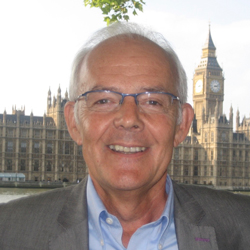
Professor Adrian Williams
FRCP AASM
Addressing obstructive sleep apnoea early: how to address an unmet need for patients without a tenable treatment option, while reducing the burden on the NHS.
Obstructive sleep apnoea (OSA) is universally appreciated to be extremely common, to some degree affecting 25% of middle-aged men and 13% of middle-aged women globally.
OSA is of course also invariably associated with troublesome snoring, which has a huge additional impact on both the family dynamic and work productivity. It impacts on almost all body organs and, as a result, has many and varied effects often first seen in primary care, both by the general medical practitioner and dental practitioner.
Early intervention in OSA
With the ongoing COVID-19 pandemic, the push to lighten the burden on tertiary care has been accelerated. Moving the initial management of OSA to secondary and primary care is therefore a logical next step for earlier intervention, improving quality of life, reducing the risk of complicating medical conditions such as high blood pressure and diabetes and, most crucially, ensuring that the NHS is able to work more efficiently and cost-effectively.
Obstructive sleep apnoea [OSA] is universally appreciated to be extremely common, to some degree affecting 25% of middle-aged men and 13% of middle-aged women globally.
The collapse of the breathing passage, related to insufficient action of the ‘dilator’ muscles that keep the airway open, is the recognised origin of OSA. Hence, the almost universal approach to treatment, after usual behavioural interventions such as weight loss, is through the splinting of the upper airway either by positive airway pressure from continuous positive airway pressure (CPAP) or a dental mandibular advancement device. But in mild-to-moderate OSA, this is not commonly tenable, leaving many patients without treatment. An alternative approach is therefore appealing, especially one addressing a primary underlying factor, specifically the insufficient tone of the dilator muscles, including the tongue, that can lead to the breathing passage fully collapsing during sleep.
The low-touch approach
The advancement in material science and technology has allowed many new and exciting innovations in the field of sleep therapies. One such device that is both clinically proven and low-touch, is the new daytime therapy for mild OSA called eXciteOSA, which uses neuromuscular electrostimulation applied the tongue. From my practice’s experience, devices that are easy to use and utilise virtually connected technology are a potentially important part of the solution for a large number of patients with no current acceptable solution. As such, devices such as this one have significant potential to meet not only the NHS’s current COVID-impaired care commitments but future health and financial goals.
Signifier Medical Technologies’ new eXciteOSA device offers an innovative daytime therapy for patients with mild OSA. Multiple international clinical studies showed convincing evidence of substantial improvement in mild OSA and snoring. For more information, visit www.uk.eXciteOSA.com



